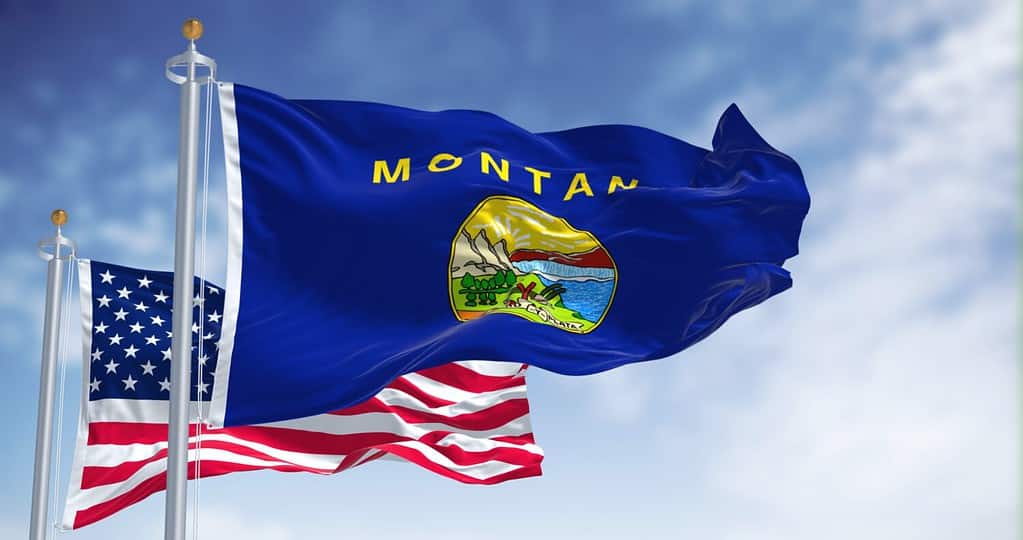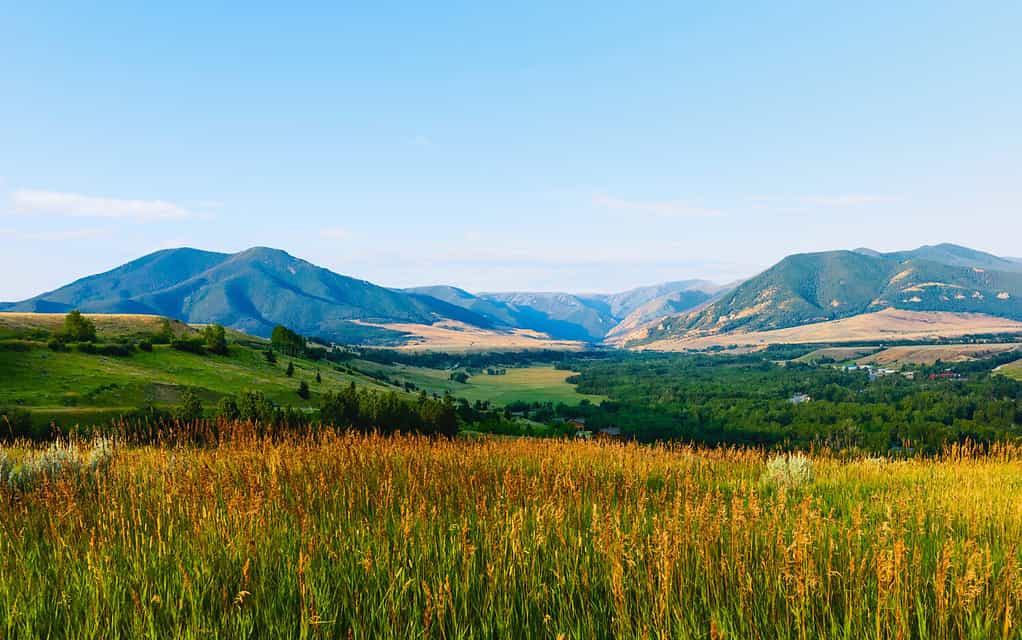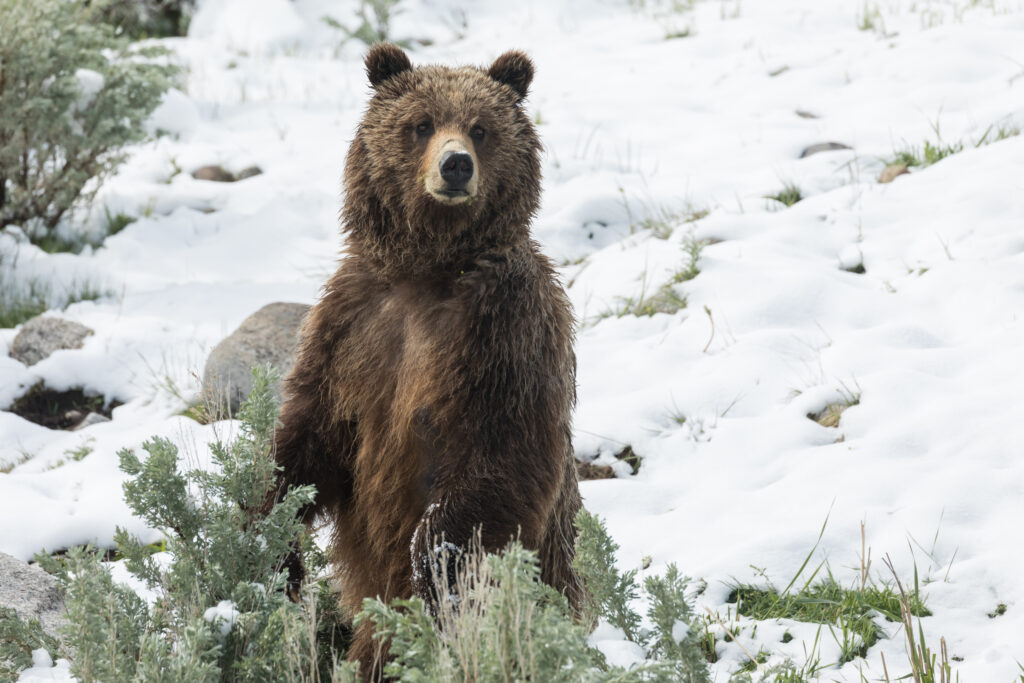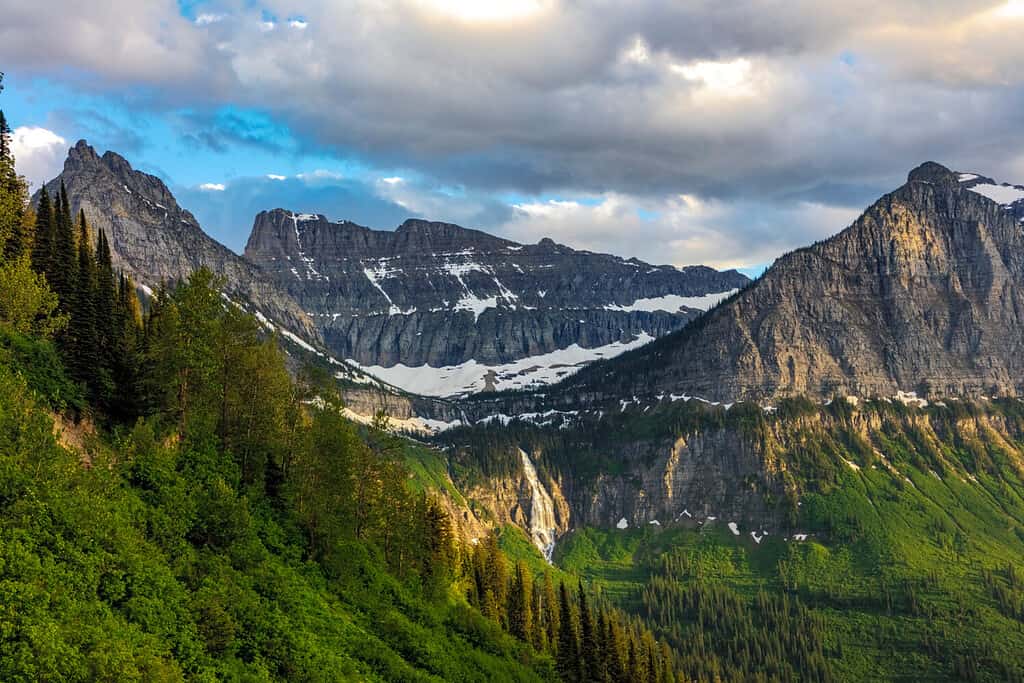Key Points:
- Montana is the fourth largest state in the United States and has a land area of 145,552 square miles.
- It is 630 miles wide, which is around 2.5 times wider than its overall height of 255 miles.
- Popular destinations in Montana include Glacier National Park and Yellowstone National Park, the world’s first national park.
Have you visited the northwestern state of Montana? Its vastness stretches across the northern great plains into the Rocky Mountains. The Big Sky state fills visitors and residents with a sense of wonder and opportunity. The friendly faces of locals smile at you from towns such as Livingston, Wibaux, and Bozeman. With so much to see, you might wonder how long it would take you to cross the state.
Montana is the fourth largest state in the United States, only dwarfed by Alaska, Texas, and California. It has a land area of 145,552 square miles. That’s pretty big, in fact, it compares to the size of entire other countries, such as Zimbabwe and Japan. 39 European countries are smaller than Montana alone. For example, Austria would fit into Montana 4.5 times! For an even wilder size comparison, check this out. Rhode Island, the smallest state in the United States, would fit into Montana just over 94 times! Let’s continue to explore the size, scope, and wonders of this great state.
Where Is Montana Located on a Map?
Montana is situated in the Mountain West region of the Western United States. To its west is Idaho, to its east is North Dakota and South Dakota, and to its south is Wyoming. To its north are the Canadian provinces of Alberta, British Columbia, and Saskatchewan. Montana’s capital is Helena and the biggest city in the state is Billings.
How Wide Is Montana?

Montana is the fourth largest state in the United States.
©rarrarorro/Shutterstock.com
From east to west, Montana is 630 miles wide. That’s about 2.5 times wider than its overall height of 255 miles. There is not much difference between the widest point in Montana and the overall width of the state. Traveling straight across, it would take you 10 hours and 22 minutes to traverse a route from Wibaux to the Idaho border near Mullan. On this straight-across route, you would travel 661 miles in total, not accounting for gas stops or tourism. For folks who haven’t traveled much, that seems like a really great distance to travel in one day, and it is. How could you resist stopping off at one of so many incredible places along your route, such as Glacier National Park or a small and sweet coffee shop?
Becoming a Part of the United States
Montana was slow to become a part of the United States. It is the 41st state, and it was admitted to the Union on November 8, 1889. A complex history of ownership slowed its progress into the union. It was divided several times and acquired in several land deals, including the purchase of the Louisiana Territory in 1803, the Nebraska Territory in 1854, and the Dakota Territory in 1861. Oregon even owned a portion of the state for some time.
In 1864, Congress made Montana its own territory. It remained a territory for 25 years. Benjamin Harrison issued a presidential proclamation that incorporated Montana into the United States in 1889. Much of the original legislation for the state needed to be amended and ratified several times.
After much struggle, Montana voters called a constitutional convention in 1972 to create a new state constitution. This constitution is one of the most progressive in the nation to this day.
Geography of Montana

Rolling prairies make way for the Bear Tooth Mountains in Red Lodge, Montana.
©Daniel J. Rao/Shutterstock.com
Montana is home to vast geographical wonders. Its sheer size allows the scenery to change in many fascinating ways. Starting in the east where the North Dakota Badlands make way for rolling prairies and extending all the way to the west where the mountain climb to astounding heights.
Montana’s entire north side borders Canada, while the rest of the state touches North Dakota, South Dakota, Wyoming, and Idaho. About 3/5 of the state is Great Plains grasslands and scrublands. As you travel west, you’ll see the Rocky Mountain Region tower before you. This region claims the other 2/5 of Montana’s land. The valleys in this region are flat and grassy, while the forests are full of evergreens that surround cold and clear mountain lakes.
There are more than 3,200 named lakes and reservoirs in Montana, and the state boasts nearly 170,000 miles of river with 120-plus named waterfalls along them. One such waterfall is Feather Plume Falls — the tallest waterfall in Montana. Impressively, there are also almost 3,000 mountains in Montana, the tallest of which is Granite Peak at a height of 12,807 feet. The state is also home to one of the largest and most important grasslands that remain in the United States.
Wildlife in Montana

Montana has the second largest
grizzly bear
population in the United States.
©Kelp Grizzly Photography/Shutterstock.com
Montana has an astounding amount of wildlife, including the rare (and sometimes dangerous) grizzly bear. Other notable animals include elk, pronghorn, wolverine, cougar, and bobcat.
Elk (Cervus canadensis) is one of the largest land mammals in North America. Also known as wapiti, these large and beautiful creatures inhabit a large portion of the western side of Montana. Montana has one of the largest elk populations in the United States.
Only five states have grizzly bear populations, and Montana has the second largest of these populations, after Alaska. Due to the state’s focus on the protection of these great beasts, the population has grown to 1,800-2,000 bears. This is nothing compared to the 30,000 Grizzlies that inhabit Alaska, but it is more than double the state with the third largest population — Wyoming (population 730).
It’s not just large mammals that inhabit the state. Fish and birds live in abundance, including a population of neotropical birds, such as the western tanager and the eastern phoebe. Many of these birds can be seen in the national forest and state park areas surrounding Livingston in Montana.
Montana’s salmon population includes all five types of salmon, and other fish swim in the clear waters that run through the state. One of the rarest fish in North America, the pallid sturgeon, can be found in Montana. Another rare fish inhabiting the waters is the pygmy whitefish.
Montana has a dense insect population, as well, including a barrage of mosquitos in the summer months. People traveling to Montana in the summer months should be prepared for large numbers of mosquitos and horseflies. Other risks include encounters with the prairie rattlesnake — Montana’s only venomous snake. Encounters with these snakes are not uncommon, but also usually not high risk. Take precautions when hiking in the wilderness and follow guidelines for what to do if you encounter one of these beautiful reptiles. Animals are not malicious, only reacting to the world around them. Tread with care and step with grace as you explore the vast wilderness of Montana.
Recreation in Montana

Glacier National Park is roughly 1,583 square miles in size with 25 active glaciers.
©Danita Delimont/Shutterstock.com
On the topic of vast wilderness, there is so much to do when you visit or live in the Treasure State. Glacier National Park is a playground of exploration and wild beauty. Known as the “Crown of the Continent,” this park stretches seemingly endlessly through Montana’s northwestern region. The park is about 1 million acres (1,583 square miles) large and contains 25 active glaciers.
Another popular destination is Yellowstone National Park, the world’s first national park. This impressive park spans 2.2 million acres — yes, double the size of Glacier. Its main feature is broad displays of geothermic activity, but there is much more to explore in the vast park outside of that scope. For lovers of geothermic activity, it’s a perfect destination. The park boasts that it is home to more than half of the entire world’s active geysers.
Don’t just stop at national parks, though! State parks, national forests, and in-town recreation all run rampant in Montana. Explore Natural Bridge Falls outside of Big Timber, Montana, or make your way to Livingston to greet friendly faces with a passion for the outdoors. Stop by the Yellowstone Gateway Museum or take a coffee break at Eastside Coffee, where the owners bake delicious fresh pastries daily and serve fantastic hand-cooked breakfasts from their small and homey kitchen. Remember to share — there are a limited number of these delicious treats and everyone deserves to taste a bite.
There is really no limit to the number of adventures you can have in Montana. From angling to white water rafting, from swimming to wildlife observation, from badlands to ghost towns like Bannack, Montana, the state is a massive hub of nature, history, and wonder.
Fun Facts
- Montana is the only state with rivers draining into the Gulf of Mexico, the Hudson Bay, and the Pacific Ocean. This is because the Continental Divide rests in Montana’s Rocky Mountains. Everything west of this divide flows into the Pacific, while everything east of it drains into the Atlantic.
- Montana’s mountains gave name to the state — the Spanish word ‘montaña’ means “mountainous”.
- More than 300 of Montana’s mountains are over 9,000 feet tall.
- The largest snowflake ever observed was found in Montana: a 15-inch snowflake recorded in 1887!
- Montana has the world record for the greatest change in temperature inside of 24 hours. Loma, Montana saw a temperature change of 103 degrees (from -54 degrees Fahrenheit to 49 degrees Fahrenheit) on January 14-15, 1972.
- The Roe River in Montana has the Guinness Book of World Records title of “World’s Shortest River.”
The photo featured at the top of this post is © iStock.com/JeanMarieBiele
Thank you for reading! Have some feedback for us? Contact the AZ Animals editorial team.






